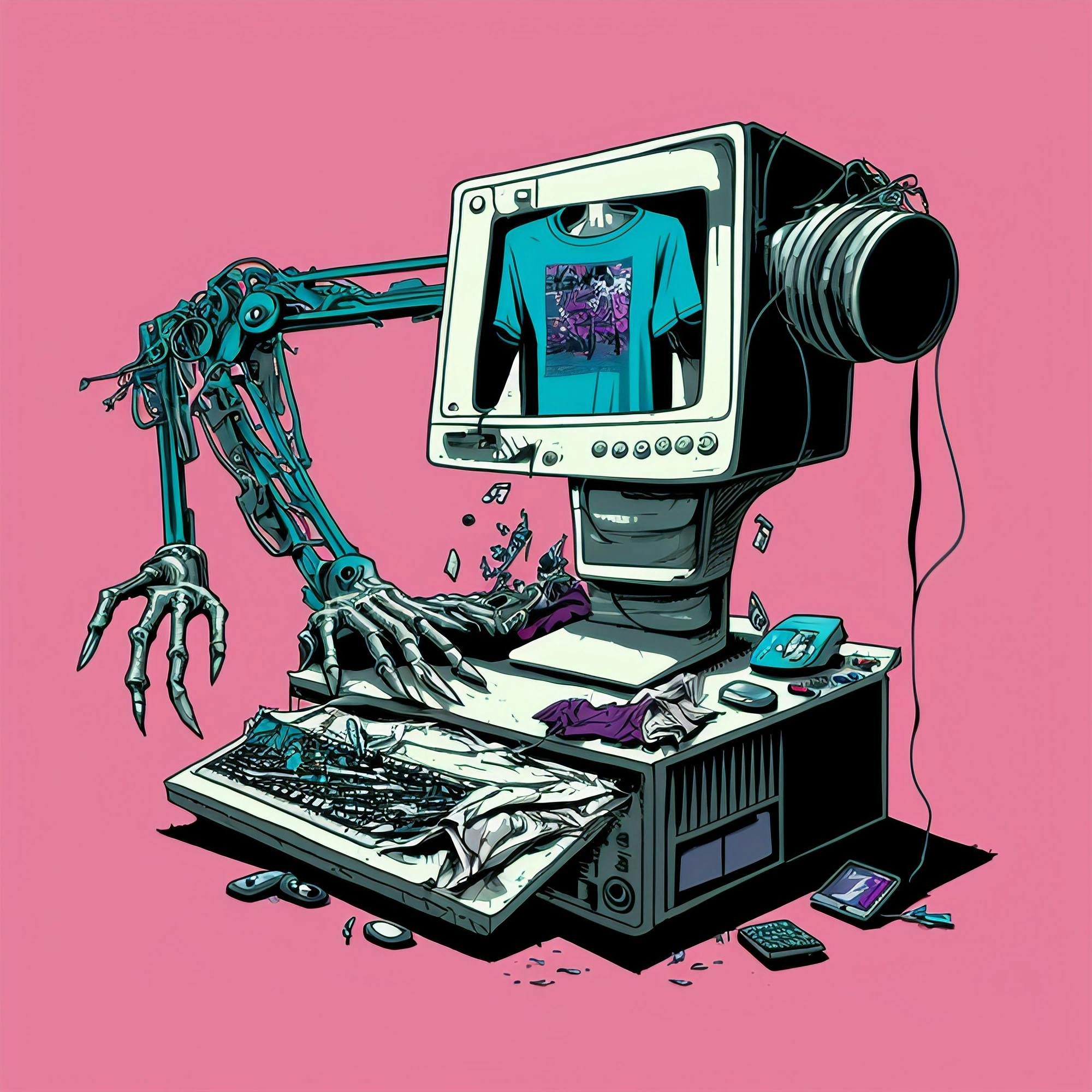
Imagine an online store that uses artificial intelligence to generate graphic T-shirts.
Once a week, the online store uses Twitter’s API to find trending topics.The top-ten trending topics are run through an image generator, like Midjourney, and added onto stock imagery using Printful’s API. The newly designed T-shirts are pushed onto a Shopify Store, using AI-generated descriptions by Critbot and OpenGPT. New products are advertised on Instagram using ChatGPT prompted descriptions and hashtags. Orders are taken care of by Printful’s drop-shipping service. Any questions by customers are answered by Ada, ZenDesk or the other myriad of customer support chatbots.
Now, imagine that the company that created the brand has long since dissolved. Artificial intelligence continues to churn out new designs and sell them to an unsuspecting public. The company and its human counterparts are gone, but the product lives on.
This is just one example of the inevitable many that will soon take up space in your feed.
In the cutthroat world of capitalism, a company’s ability to grow and adapt to changing market needs is often a measure of success. But what happens when a brand can never truly die? Enter the concept of “Necrobrands,” a term I coined to to explain a near distant future, where brands that have long lost their human supporters continue to exist and grow because their processes are run by artificial intelligence (AI).
The ubiquity of artificial intelligence is relatively unknown. While AI-generated images have a distinct signature that can be traced to a specific algorithm or machine learning model, the public remains largely unaware of this fact. As a result, Necrobrands have the potential to flood the internet with AI-generated products that are sustained without public detection. In the near future, it may become impossible to differentiate between human and machine-generated content. Today, on Twitter alone, an estimated 25% – 68% of activity is attributed to bots depending on the topic and time of day.
Yelling into the void.
While there have been recent critiques directed toward the “intelligence” of AI, policies surrounding the corporate use of artificial intelligence are nascent. This poses a challenge for the exponential speed at which Necrobrands may evolve. As unmanned brands that grow without human oversight, AI-maintained products may lose sight of the original company or founders’ values. These brands will relentlessly pursue their goals without regard for their impact on the environment, society, or the well-being of their customers. The Twitch channel, NothingForever, provides a recent example of the dangers of AI without oversight. NothingForever was an AI-generated version of Seinfeld that used GPT models to generate scripts and 3D characters. The Twitch channel ran for 24 hours a day, 7 days a week. That is, until they switched AI models which then started to generate transphobic jokes, to the owners’ embarrassment.
As consumers increasingly prioritize the environmental and social impact of the products they buy, Necrobrands pose a significant threat to building a sustainable and equitable economy. They may attract the wrong customer base, as seen in the NothingForever example, and undermine efforts to promote responsible consumption. Smaller, independent businesses can also get lost in the shuffle of content, as they cannot compete with the scale and efficiency of unchecked AI-driven brands.
Addressing the negative impact of Necrobrands will require a joint effort from policymakers, businesses, and consumers. Policymakers may need to enact regulations to ensure AI-generated products meet ethical and environmental standards, while holding creators accountable for any harm they cause. Businesses will have to adopt more sustainable and ethical practices. Consumers may need education on the potential drawbacks of AI-driven brands.
The rise of Necrobrands may become an inevitable consequence of end-stage capitalism and the growing accessibility of artificial intelligence. However, with ongoing research on the ethics of AI safety, there is hope that we can learn to align advanced AI systems with human values and mitigate their negative impact. This can help build a more sustainable, equitable, and human-centric approach to consumption in the future.
Until then, we’re just yelling into the void









